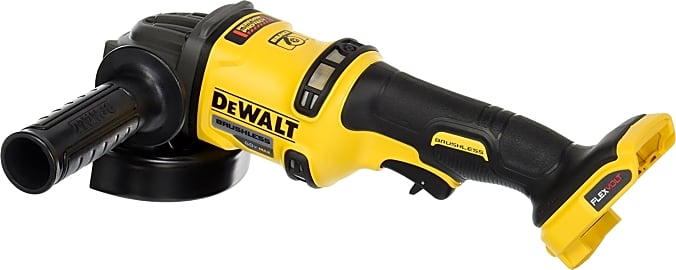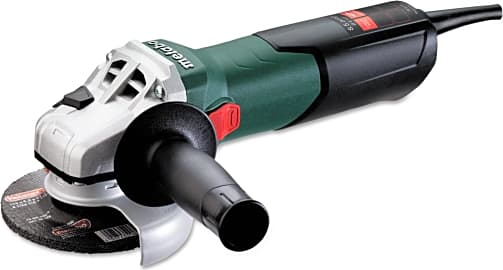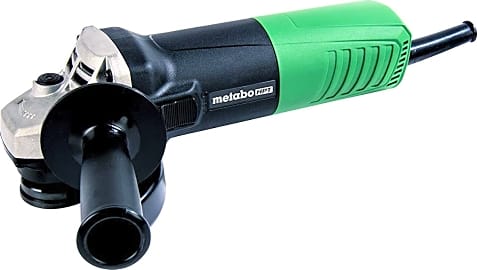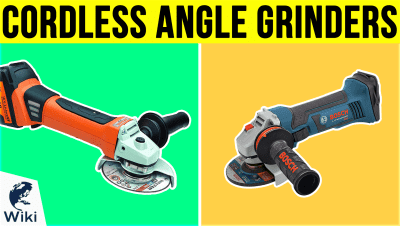The 10 Best Angle Grinders

This wiki has been updated 39 times since it was first published in April of 2015. If you work with metal in any capacity, a high-quality angle grinder is worth every penny. These cutoff tools use an abrasive wheel to shear through or hone various materials, making them perfect for slicing, sharpening, deburring, and more. These options are up to just about any task, while also being comfortable and durable enough to last you all day on even the most demanding job sites. When users buy our independently chosen editorial choices, we may earn commissions to help fund the Wiki.
Editor's Notes
November 24, 2020:
For this update, we removed a refurbished option -- the Black+Decker BDEG400 -- due to availability concerns. Since we only had one battery-powered model on our list, we decided to add another, the Milwaukee 2781-22, an 18V model. At 16 pounds, it’s not the lightest model out there, and the high price tag might not make sense for the casual user. However, for a professional who wants the mobility of a cordless tool, and has enough projects to make it worth the cost, it could be a great choice. If you’re interested in more battery-powered models, this collection of cordless angle grinders should provide a good selection.
Angle grinders are one of the most dangerous tools you can use, and require strict adherence to safety protocols to prevent injury. In addition to using the proper technique when operating, you also need to pay close attention to the type and size of the disc you plan on using in your grinder. Take the time to inspect the specifications of the disc, and ensure that its RPM rating is higher than that of the grinder.
Since angle grinders have a high risk of creating sparks, you should never use them around flammable materials, including combustible dust. Proper PPE, including eye and hearing protection, must also be worn while operating.
If you’re looking for something a little more sturdy, you may want to consider a bench grinder. These machines won’t be able to maneuver around workpieces like an angle grinder, but by securing them to a workbench, they're perfect for sharpening edged tools and smoothing metal pieces prior to welding.
July 11, 2019:
The DeWalt 60V Max is the only cordless option on the list, and you should know that it works extremely well — for a battery-powered model. It's simply not as powerful as some of its corded brethren, but that's a necessary sacrifice you make for the convenience a cordless model offers. It's still good enough for most jobs, but professionals will want to have another, stouter model handy as well.
One feature that you'll either love or hate is the lock-on side switch that a few units (like the Bosch 1375A) boast. It's certainly more convenient for extended use, but if you're new to angle grinding, the safety risk (not to mention the risk of accidentally cutting too far) might outweigh the benefits for you.
Both DeWalt and Metabo placed multiple models on this edition of the list, and all of their offerings are nearly equal in terms of quality. The DeWalt DWE402 earned the top spot because it offers high-level performance at a middle-of-the-road price. The W9-115 was our favorite of the Metabo offerings, with only its occasionally-annoying spindle preventing it from ranking higher.
Special Honors
Dynabrade Rebel This depressed-center wheel model has a built-in governor to ensure that the power stays consistent regardless of the material you're working with. The vibration-dampening handle is easy on your hands and arms, even with extended use. dynabrade.com
Ingersoll Rand M2 Designed for heavy-duty industrial applications, this beast is more than capable of handling anything you can throw at it. Maintaining it is also a breeze, as you can disassemble it to reach the motor, and the muffler has a back cap to allow easy access for cleaning. ingersollrandproducts.com
Metabo WPB 36 LTX This extremely large, battery-operated device has a generous three-inch cutting depth, making it suitable for a wide range of jobs. The battery packs show the charge status as well, so you know exactly how much juice you have left. metabo.com
All About Angle Grinders
Either way, they are a newer invention than many of the other commonly used power tools.
Angle grinders are a relatively new power tool with a somewhat murky past. There are conflicting reports about who actually invented them, with some giving credit to the German company Ackerman and Schmitt in 1954, while others give credit to Thomas Joseph and claim it was invented in 1973. Either way, they are a newer invention than many of the other commonly used power tools. Angle grinders also go a by a couple of different names. They may be referred to as disc grinders or side grinders.
Depending on the model, an angle grinder may be powered by compressed air, gasoline, or an electric motor. They are a versatile tool that can be used to cut, grind, sand, or polish materials. For each of these different applications, a specific type of disc will be used. These discs include polishing pads, sanding discs, cut off discs, grinding stones, abrasive discs, wire brush wheels and more.
The disc will be mounted on a geared head that spins at speeds ranging from 4,000 RPM to 12,000 RPM. Most will have an adjustable guard to keep the user safe, and allow for two handed operation. Angle grinders make use of large bearings to counter the side forces generated during cutting.
Angle grinders are commonly found in a range of settings from workshops and construction sites to auto garages and emergency rescue situations. Some common uses include grinding rust off of a metal object, cutting through metal or concrete, removing paint, and polishing a range of metal objects. They can also be used for cutting through bricks, tile, and removing excess mortar.
Choosing An Angle Grinder
People new to using angle grinders are often lost when it comes time to purchase one because of the range of sizes available. A general rule of thumb is that the bigger the grinding disc, the better it will be for larger jobs. The smaller the disc, the easier it will be to control. When you see a grinder labeled as a 4.5-inch grinder, the manufacturer is referring to the disc size it accepts and not the length of the machine. If you are a homeowner that uses an angle grinder for periodic work around the house, then a 4.5-inch grinder should suffice. On the other hand, if you are a contractor who often needs to cut through large beams for deck work, a larger grinder would be a better choice.
When you see a grinder labeled as a 4.5-inch grinder, the manufacturer is referring to the disc size it accepts and not the length of the machine.
The thickness of the material being cut should also come into consideration when picking an angle grinder. The measurement the manufacturer quotes is the diameter of the disc. This means and 4.5-inch angle grinder can only cut through materials that are 2 inches thick or less.
More often than not, smaller grinders will spin at higher speeds than larger grinders, but this is not a hard and fast rule so it always pays to check and understand the amp rating of the motor too. The more amps the motor has, the faster it will be. One must also take into account that a machine with a larger disc needs more amps to spin the disc at the same speed as a machine with a smaller disc.
This means that a 7-inch grinder with a 13 amp motor is going to spin at roughly the same speed as a 4.5-inch grinder with a 7 amp motor. The faster a grinder spins, the more susceptible it is to overheating, so it is a good idea to choose a model that has adjustable speed settings. This way you can set the motor to spin at the exact speed needed, with less worry about it overheating.
How To Use An Angle Grinder Safely
Angle grinders are an extremely useful tool, but they can also be very dangerous if used incorrectly. For this reason, it is important to follow a few safety tips. The three most common causes of injury when using an angle grinder are metal particles getting lodged in the operator's eye, kickback from the spinning force of the disc, and the disc shattering or exploding.
Wearing work gloves is also a smart idea as this offers your hands one more layer of protection against abrasion or cuts.
To reduce the chance of experiencing any of these injuries one must take the necessary precautions. First and foremost, operators should always wear safety goggles when using an angle grinder. Since angle grinders create a lot of dust when grinding, it is also a good idea to wear a dust mask, and work in a well ventilated area if possible. Wearing work gloves is also a smart idea as this offers your hands one more layer of protection against abrasion or cuts.
If you are unfamiliar with using an angle grinder, start your grinder on the lowest speed setting and do a few practice cuts or small grinding on an excess piece of material before working on your project. This will allow you to get a feel for the machine. As you get comfortable with the amount of kickback, you can increase the speed. Not only will working in this manner make it safer, it will also reduce the chance of making a mistake on the final project.
To reduce the possibility of the grinding wheel exploding, make sure the disc speed limit is higher than the angle grinder speed. If one uses a disc rated for 6,000 RPM on a grinder set to rotate at 10,000 RPM, there is a high possibility of the disc shattering as it overheats.















